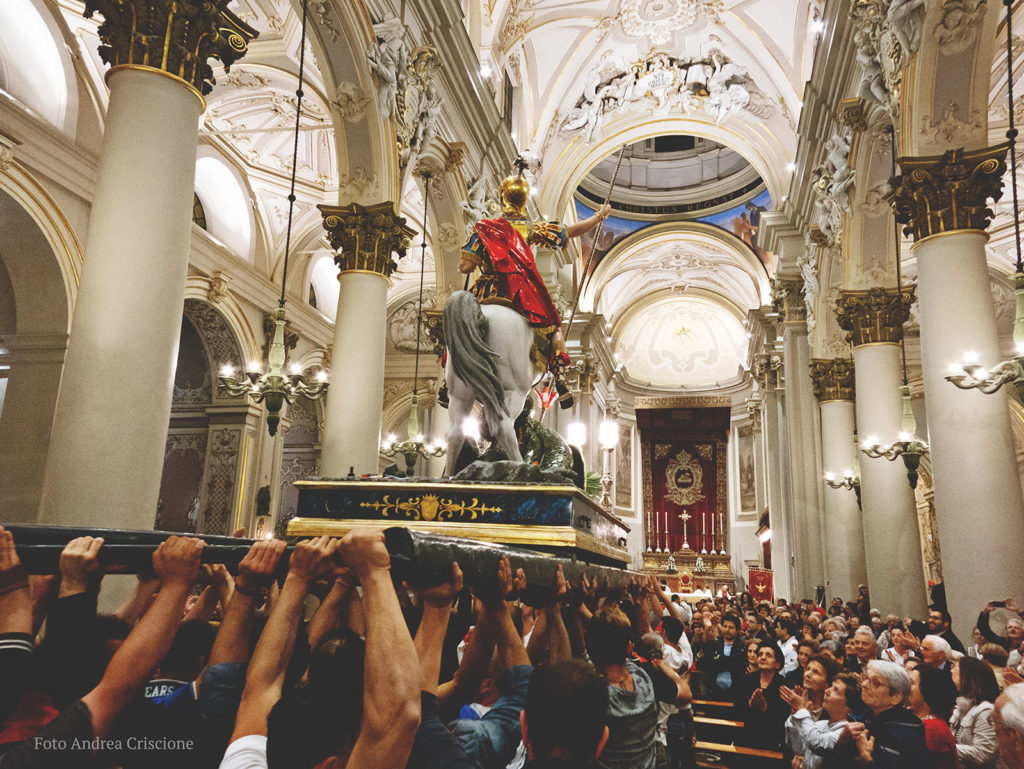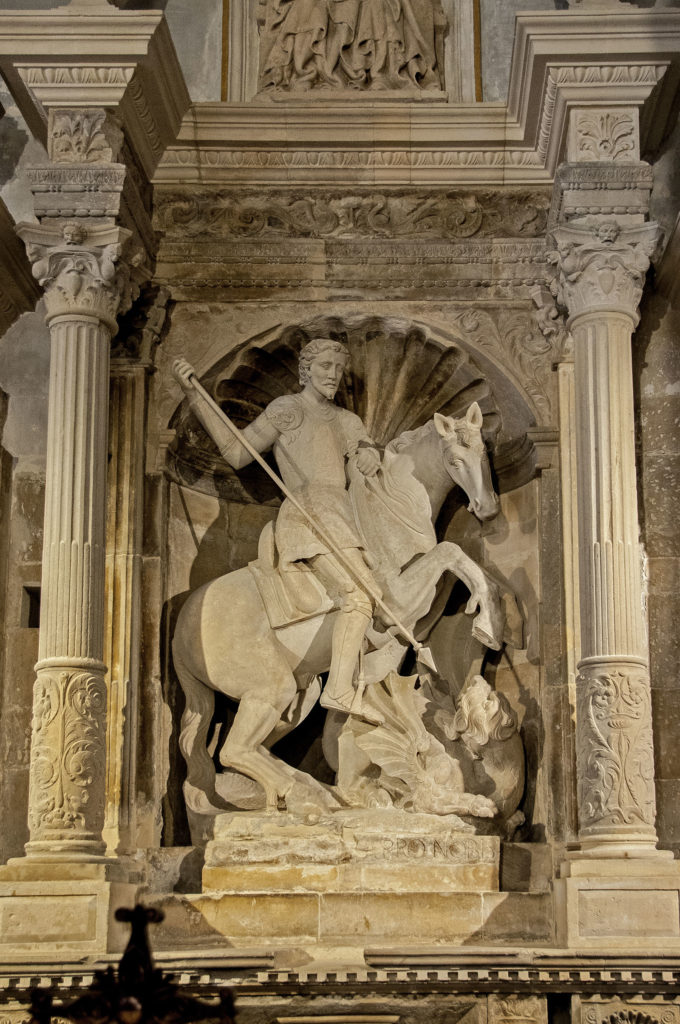The scenic staircase of the church of San Giorgio hosted performances of plays about the patron saint until the 18th century.
The stories performed on the staircase, used as an open-air stage, told of the chivalrous deeds of “Giorgio di Capocci” who freed the Queen of Berito from the Dragon, but there were also other comedies, tragedies and operas.
On the occasion of the feast of St. George, the Mother Church becomes even more lively and scenic thanks to festive decorations made with old red drapes and flower arrangements.
During the feast the statue of St. George and the Holy Ark are taken out of the niches above the side doors and transported to the sides of the transept to be admired by worshippers before the procession.

The Gagini altarpiece is made entirely of limestone, the most widespread stone in the territory of Ragusa and Modica, extracted from the Hyblaean quarries.
Touching this work would allow us to understand the consistency of the soft limestone, which, thanks to the skilful work of the sculptors, becomes malleable and bestows a near-realistic three-dimensionality upon the work.
